- Izu Peninsula top
- General
- Earthquake and volcano
- Too many deer in Izu
- East
- Ito - its old buildings
- Anjin = Wlliam Adams and Ito
- Religious Charisma Nichiren
- Washtub race
- Yokikan - Spa ryokan
- Minami-Kaikisen: Auberge
- Ike and its paddy fields
- Summer has come!!!
- Inatori - fish, spa and more
- Central
- Banjo Waterfall
- Mount Amagi
- Shuzenji - old spa town
- Arabashiri - Bandai-Jozo
- Oomi Land - heart of Izu
- West and south
- Heda on the west coast
- Toi - Gold mine
- Matsuzaki - namako wall
- Izu-no-Chohachi - Plasterer
- Kumomi on the west coast
- Shimoda - Tojin-Okichi
- Cottage life
- Fishing in Usami
- Start of my fishing life
- Training camp in Amagi
- Cottage life / music&drinks
- Party in Izu - part 2
- Party in Izu - part 1
- Sunday morning concert
- Ice and snow in Amagi
- My summer house
- Restaurant and eatery
- Let’s eat Izu-Deer!
- Isui-an - exquisite soba
- Sugizen - big prawn fry
- Sayang - Bali restaurant
- Restaurant Tanaka

The center of Shuzenji: Katsura River and Tokko-no-yu on its river bed.
Shuzenji - stroll in a small spa town with blutal reminiscences
A kabuki play entitled "Shuzenji Monogatari" (*) was written by Okamoto Kidō (1872-1939) and performed first in 1911. "Shuzenji Monogatari" was a great success and its script was even translated into foreign languages. I knew as a child an ominous scene where the master mask maker Yashaō was grumbling about the failed works; "shadow of death is seen on all masks of shogun I engrave". The play was later used by a composer Shimizu Osamu (1911-1986) and reproduced as opera in one act in 1947.
| (*) | Literally means "Tale of Shuzenji". However, sometimes translated as "The Mask and Destiny" or "Mask-Maker's Story". |
"Shuzenji Monogatari" handles the historical case of Minamoto no Yoriie (1182-1204), the second shogun of the Kamakura Shogunate, who was exiled to Shuzenji temple and assassinated a year later. Shuzenji was used to confine politically dangerous persons in the Kamakura period (1192-1333). Not only Yoriie but also his uncle Minamoto no Noriyori (1150?-1193),a victorious commander during the civil war, was also confined in Shuzenji and later killed.

Gate of Shuzenji temple
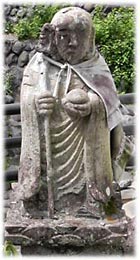
A rustic Jizo statue by the roadside
The place name Shuzenji came from the temple, which was said to be established by a famous monk Kukai (774-835) in 807. The first hot water spring in Shuzenji is also attributed to him. According to tradition, he was moved by a dutiful son who helped his ailing father bathing in cold water and dug a hot spring using a Buddhist altar equipment "tokko". "Tokko-no-yu" ("Hot spring of tokko" - please see the photo on top of this page) still exists on the bed of Katsura River and visitors are free to put their legs into the thermal water for relaxation.
The tiny spa town was especially popular among writers during the Meiji period (1868-1912). They stayed many days and weeks in guest houses in Shuzenji and wrote literary works. Okamoto Kidō was one of those Shuzenji visitors. If I take up another Shuzenji related work "Izu no Odoriko" by Kawabata Yasunari (1899-1972), the first meeting of the heroin and hero takes place on Yukawa Bridge of Shuzenji. Natsume Soseki (1867-1916) came here for the treatment of his ailing stomach.
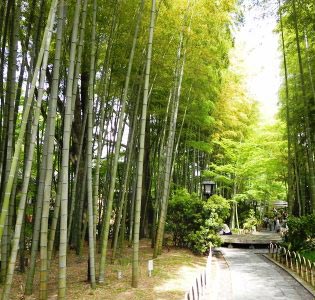
Even now there are many old guest houses in Shuzenji. Asaba boasts its 350 years' tradition. Arai-ryokan is proud of its buildings which are publicly registered as valuable immovable assets. The only problem for us poor visitors is their high price. You have to be ready to pay nearly 40,000 yen (more than US$400) if you stay a night in Asaba with obligatory dinner and breakfast.
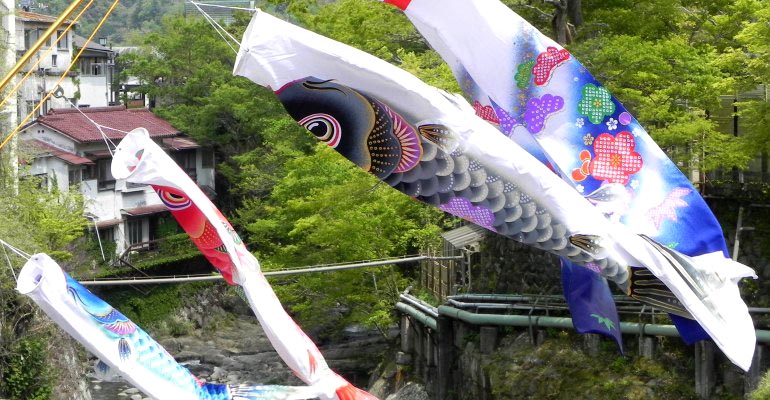
It was the beginning of may and Koinobori were flying in the sky.
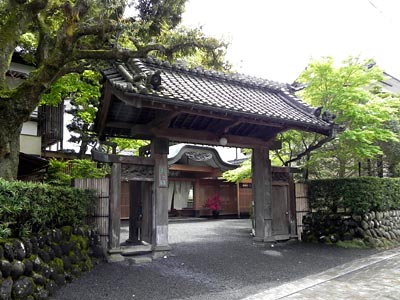
Gate of Asaba - guests can appreciate no play performed on a stage in the garden across pond.
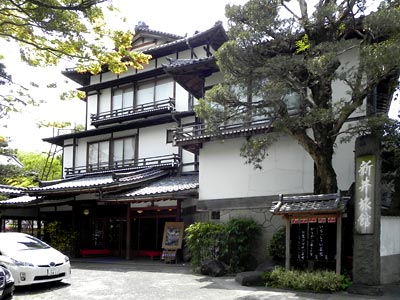
Gateway of Arai-ryokan
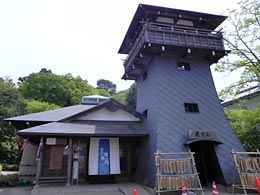
Hakoyu with watchtower

A cheap alternative is for example Hakoyu. Yoriie is said to be assassinated while he was bathing in Hakoyu at the foot of Kokeikyo Bridge. The original building of course does not exist anymore, but a public bath was recently built in traditional wooden house style and we can enjoy the comfort of bathing at mere 350 yen (about US$4).
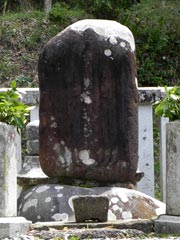
Grave of the second shogun Minamoto no Yoriie
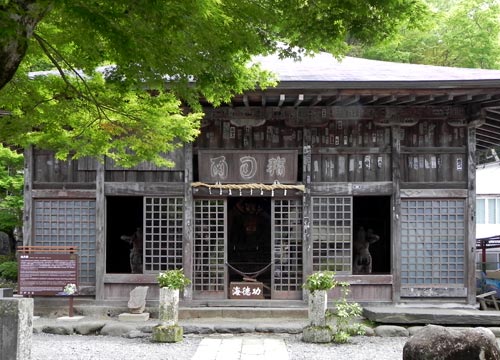
Shigetsuden is the oldest wooden building in Izu. Place your cursor on the buddha statue, then you can see an enlarged photo.


It takes a few minutes from Hakoyu to the grave of Yoriie. His grave is simply a piece of natural stone. It is ironical that a small temple was erected by his mother Hojo Masako next to the grave to console his soul which must have been filled with grudge. Yoriie was killed under the instruction of Hojo Tokimasa, the elderly brother of Tokiko and the uncle of Yoriie. Later the son of Yoriire, Kugyo, assasinated the third shogun Minamoto no Sanetomo, the younger brother of Yoriie, with the doubt that Sanetomo must have orderd assasination of his father. After a series of murder among the Minamoto clan, its lineage ended up with Sanetomo and the Kamakura Shogunate was thereafter governed by the Hojo clan.
It is worth strolling along Katsura River between Katsura Bridge and Kaede Bridge - both names come from the two names of sisters in "Shuzenji Monogatari"- through bamboo grove. We feel there as if we were in Kyoto!
Shuzenji is a small town and it takes only quarter an hour to visit all interesting places. Therefore, we should not make haste, but just relax and inspire the atmosphere of past times.